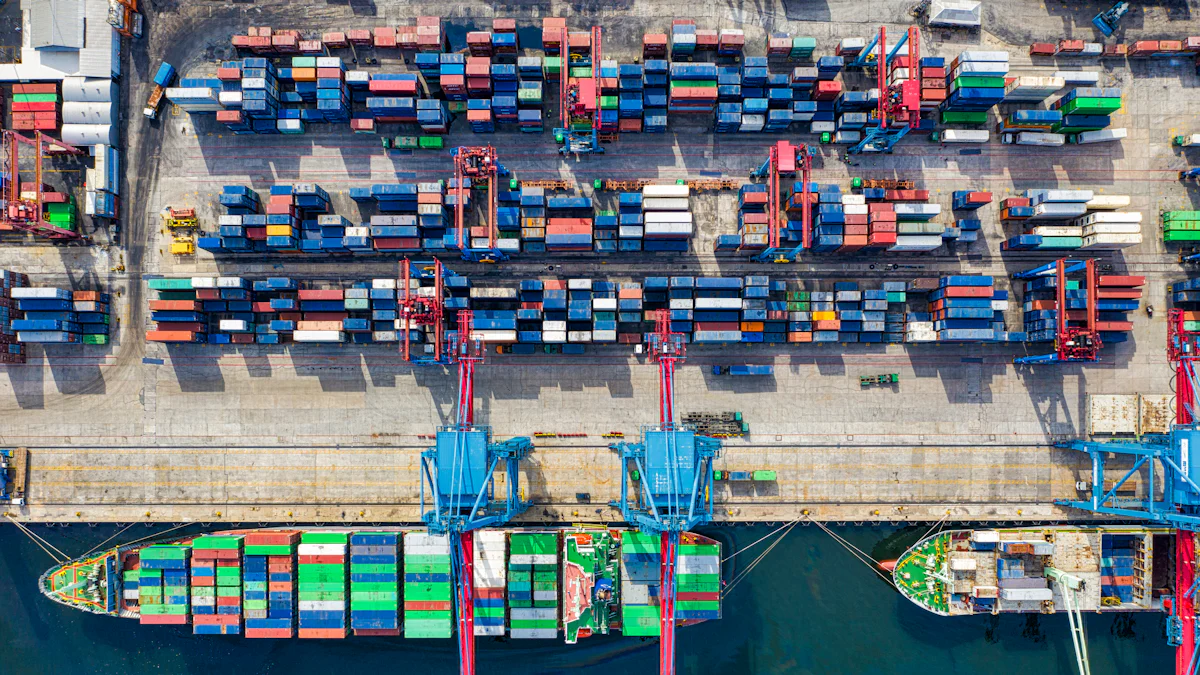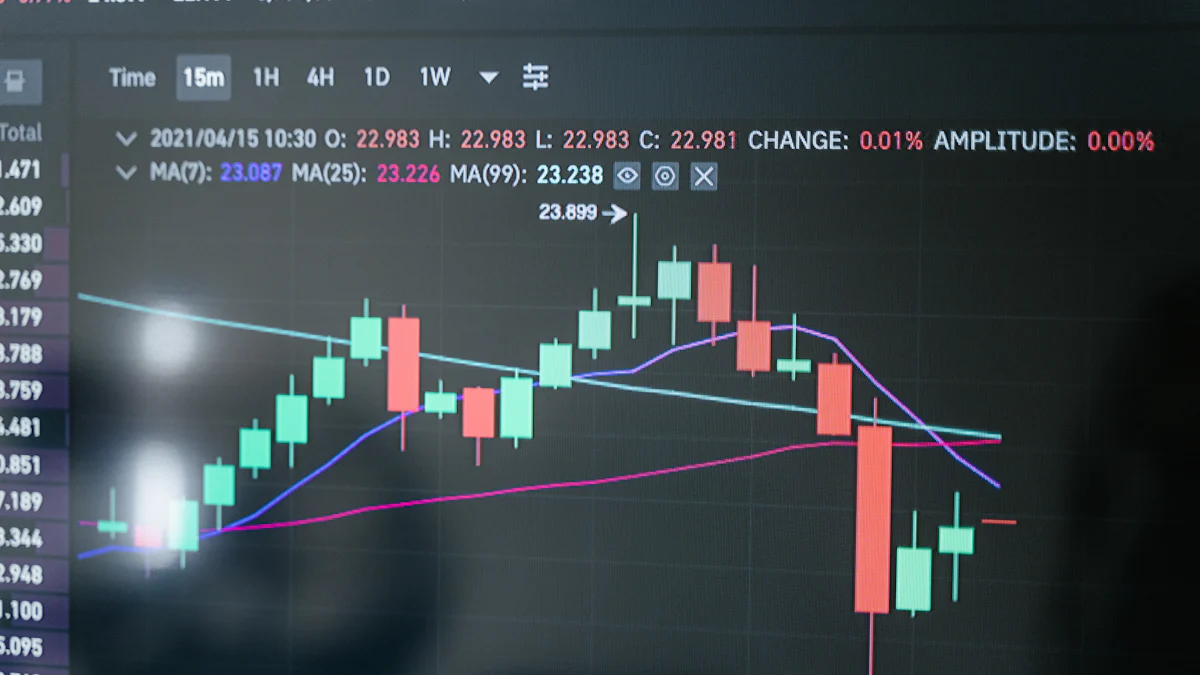2024: What's New in Global Supply Chain Management

Supply chain management plays a crucial role in the global economy. Efficient supply chains ensure that products reach consumers quickly and cost-effectively. Staying updated with the latest trends is essential for businesses to remain competitive. The year 2024 promises rapid changes and innovations in supply chain management. Technological advancements, sustainability efforts, and geopolitical shifts will reshape how companies operate. Embracing these changes will help businesses navigate the complexities of the international supply chain landscape.
Technological Advancements

Artificial Intelligence and Machine Learning
Predictive Analytics
Artificial Intelligence (AI) and Machine Learning (ML) are transforming supply chain management. Predictive analytics uses historical data to forecast future trends. Companies can anticipate demand shifts and adjust inventory levels. This reduces waste and improves customer satisfaction. AI-driven predictive analytics also helps in identifying potential disruptions. Businesses can prepare for challenges before they occur.
Automation in Warehousing
Automation in warehousing is another significant advancement. Automated systems handle repetitive tasks with precision. Robots and automated guided vehicles (AGVs) streamline operations. This increases efficiency and reduces human error. Warehouses can operate 24/7 without breaks. Automation also enhances safety by reducing the risk of accidents.
Blockchain Technology
Enhanced Transparency
Blockchain technology offers enhanced transparency in supply chains. Every transaction gets recorded on a decentralized ledger. This ensures that all parties have access to the same information. Transparency builds trust among stakeholders. Customers can trace the origin of products. This is particularly important for industries like food and pharmaceuticals.
Security and Traceability
Blockchain also improves security and traceability. Each transaction gets encrypted and linked to the previous one. This makes it nearly impossible to alter records. Companies can track products from production to delivery. This reduces the risk of fraud and counterfeiting. Enhanced traceability ensures compliance with regulations.
Internet of Things (IoT)
Real-time Monitoring
The Internet of Things (IoT) enables real-time monitoring of supply chains. Sensors collect data on various parameters like temperature and humidity. This information gets transmitted to a central system. Managers can monitor conditions in real-time and make quick decisions. Real-time monitoring helps in maintaining product quality. This is crucial for perishable goods and sensitive materials.
Smart Logistics
IoT also contributes to smart logistics. Connected devices optimize routes and reduce fuel consumption. Vehicles equipped with IoT devices provide real-time location updates. This ensures timely deliveries and reduces delays. Smart logistics improve overall efficiency and reduce operational costs. Companies can offer better services to their customers.
Technological advancements are revolutionizing supply chain management. AI, blockchain, and IoT are making operations more efficient and transparent. Embracing these technologies will help businesses stay competitive in 2024.
Sustainability and Green Supply Chains

Eco-friendly Practices
Carbon Footprint Reduction
Reducing the carbon footprint has become a top priority in supply chain management. Companies now focus on minimizing emissions throughout their operations. This includes optimizing transportation routes to cut down fuel consumption. Many businesses invest in energy-efficient technologies. Renewable energy sources like solar and wind power are gaining popularity. These efforts not only benefit the environment but also reduce operational costs.
Sustainable Sourcing
Sustainable sourcing ensures that materials come from eco-friendly sources. Companies now prefer suppliers who follow green practices. This includes using recycled materials and reducing water usage. Ethical labor practices also play a crucial role. Businesses aim to support communities and protect natural resources. Sustainable sourcing builds a positive brand image and attracts eco-conscious consumers.
Circular Economy
Waste Reduction
The circular economy model focuses on waste reduction. Traditional supply chains often generate significant waste. The new approach aims to reuse materials and extend product life cycles. Companies design products with recycling in mind. This reduces the need for raw materials and minimizes waste. Digital tools help track and manage waste more efficiently.
Recycling and Reuse
Recycling and reuse form the backbone of the circular economy. Companies encourage customers to return used products. These items get refurbished or recycled into new products. This practice reduces landfill waste and conserves resources. Many businesses offer incentives for recycling. This creates a win-win situation for both the company and the consumer.
Sustainability and green supply chains are reshaping the industry. Eco-friendly practices and the circular economy model offer numerous benefits. Companies can reduce costs, build a positive brand image, and protect the environment. Embracing these changes will help businesses thrive in 2024.
Global Trade Dynamics
Trade Policies and Regulations
Tariff Changes
Trade policies often shift, impacting global supply chains. Tariff changes can alter the cost of importing and exporting goods. Higher tariffs increase costs for businesses. Companies may need to find new suppliers or pass costs to consumers. Lower tariffs can make products more affordable. Businesses can expand into new markets with reduced costs. Strategic planning helps companies adapt to these changes.
Trade Agreements
Trade agreements play a crucial role in global supply chains. These agreements set the rules for trade between countries. They can reduce tariffs and simplify customs procedures. Companies benefit from easier market access. Trade agreements also encourage investment in new regions. Businesses must stay informed about new agreements. Understanding these rules helps companies remain competitive.
Geopolitical Factors
Impact of Political Instability
Political instability affects supply chains significantly. Unstable regions may face disruptions in production and transportation. Companies need contingency plans to handle such risks. Diversifying suppliers can reduce dependency on one region. Businesses should monitor political developments closely. Quick responses to instability can minimize impacts on operations.
Regional Trade Blocs
Regional trade blocs influence global supply chains. These blocs consist of countries that agree to trade freely with each other. Examples include the European Union and the North American Free Trade Agreement. Membership in a trade bloc offers several benefits. Companies enjoy reduced tariffs and streamlined regulations. Trade blocs also promote economic cooperation among member countries. Businesses should consider the advantages of operating within these blocs.
Risk Management and Resilience
Supply Chain Disruptions
Natural Disasters
Natural disasters can wreak havoc on supply chains. Hurricanes, earthquakes, and floods can halt production and delay shipments. Companies must prepare for these events to minimize disruptions. Contingency plans should include alternative routes and backup suppliers. Regular risk assessments help identify vulnerable areas. Businesses can then take steps to fortify those weak points.
Pandemics
Pandemics present another significant challenge. The COVID-19 pandemic showed how quickly supply chains can collapse. Lockdowns and travel restrictions disrupt the flow of goods. Companies need strategies to keep operations running during health crises. Remote work and digital tools can maintain communication. Stockpiling essential materials ensures that production continues. Flexibility becomes crucial in adapting to changing conditions.
Strategies for Resilience
Diversification of Suppliers
Diversifying suppliers strengthens supply chain resilience. Relying on a single supplier creates a point of failure. Multiple suppliers spread the risk and ensure a steady flow of materials. Companies should source from different regions to avoid geopolitical risks. Building strong relationships with suppliers fosters collaboration. Regular evaluations help maintain high standards and reliability.
Inventory Management
Effective inventory management also boosts resilience. Keeping too much stock ties up capital and increases storage costs. Too little stock risks running out during disruptions. Companies need a balanced approach to inventory. Just-in-time (JIT) systems reduce excess stock but require reliable suppliers. Safety stock provides a buffer against unexpected demand spikes. Advanced analytics can optimize inventory levels and predict future needs.
Risk management and resilience are vital for modern supply chains. Preparing for disruptions and implementing robust strategies ensures smooth operations. Companies that invest in these areas will better navigate the challenges of 2024.
International Supply Chain Trends
Balancing Global and Local Sourcing
Risk Mitigation Strategies
Balancing global and local sourcing helps companies manage risks. Global sourcing offers access to a wide range of suppliers. This diversity reduces the impact of regional disruptions. Local sourcing, on the other hand, provides stability. Shorter supply chains face fewer risks from geopolitical issues. Combining both strategies creates a resilient supply chain.
Cost Efficiency
Cost efficiency remains a key factor in sourcing decisions. Global suppliers often offer lower prices due to economies of scale. However, local suppliers can reduce transportation costs. Proximity to markets also means faster delivery times. Companies must evaluate the total cost, not just the purchase price. A balanced approach ensures cost savings and reliable supply.
Speed of New Product Introduction (NPI)
Customization
Customization has become a major trend in product development. Consumers demand products tailored to their needs. Quick customization requires agile supply chains. Local suppliers can adapt faster to changes in design. This flexibility speeds up the introduction of new products. Companies that excel in customization gain a competitive edge.
Time-to-Market
Time-to-market is crucial for staying ahead of competitors. Faster product launches capture market share quickly. Efficient supply chains play a vital role in reducing time-to-market. Advanced technologies like AI and IoT streamline operations. Real-time data enables quick decision-making. Companies that leverage these tools can bring products to market faster.
The year 2024 brings exciting changes to global supply chain management. Key trends include technological advancements, sustainability efforts, and evolving trade dynamics. AI, IoT, and blockchain will drive efficiency and transparency. Eco-friendly practices and circular economy models will reshape operations. Trade policies and geopolitical factors will require strategic planning.
Looking ahead, supply chain management will continue to evolve. Embracing new technologies and sustainable practices will be crucial. Staying informed and adaptable will help businesses thrive. The future holds great potential for those ready to innovate and lead.
See Also
Ready to Explore: The Latest in Transport Tech for Supply Chains
Artificial Intelligence in Supply Chain: Transforming Logistics of the Future
Innovative Cloud Solutions: Transforming Supply Chain Operations
Transforming Logistics: How Supply Chain Innovation is Changing the Game
Addressing Global Expansion Challenges in Supply Chain Management
